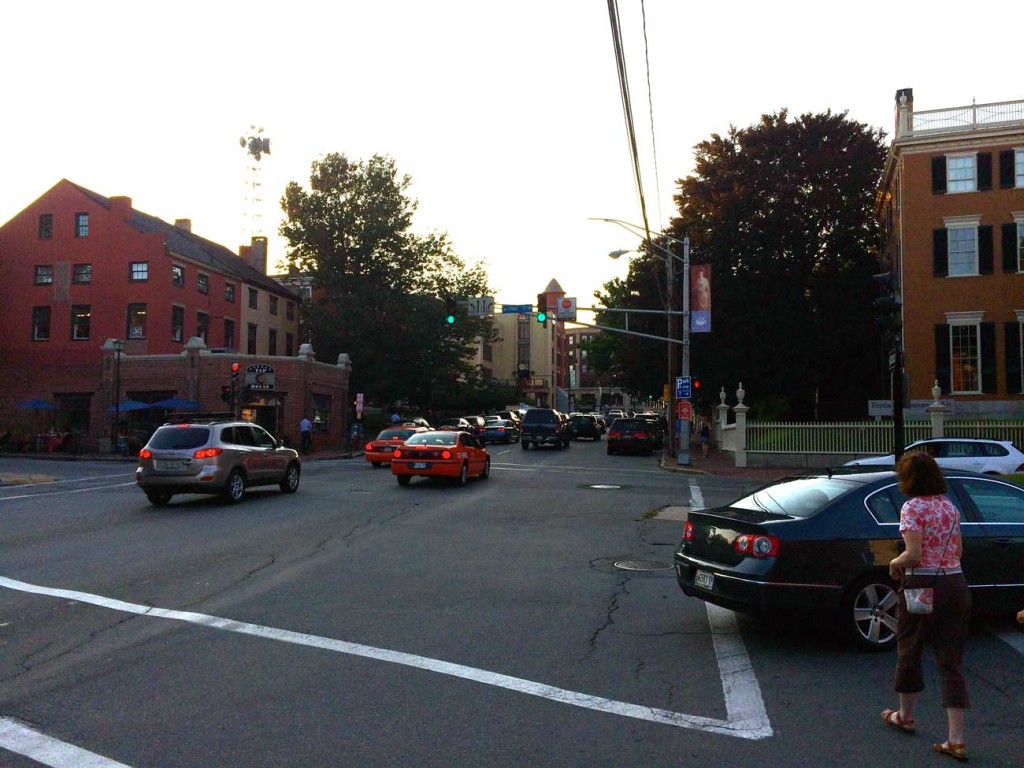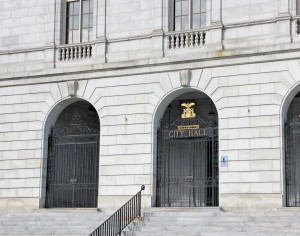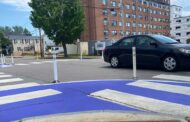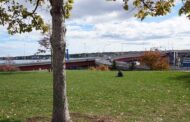State and High Streets used to be two-way roads. In the 1970s, during a period of urban planning that created traffic corridors like Franklin and Spring Street Arterials, State and High were turned into one-way highways. The idea was to move traffic quickly into and out of downtown. It worked.
After about 40 years, residents are asking if it isn’t time to go back to the way things were. Sure the one-way streets are quick, but wouldn’t the quality of life improve, and conditions for pedestrian and bicycle safety improve, if the streets went back to two-way?
About a decade ago this question was first asked and, after years of on-and-off study, public input, and bureaucratic processes, a feasibility study for converting the streets has finally been produced.
According to the study the conversion is possible, but the question remains whether it should be done.
On Monday, November 16th, at its regularly scheduled meeting, the City Council was tasked with approving a public advisory committee’s recommendation to study further the impact of two-way conversion on public safety and to generate an engineering plan for the conversion.
The public testimony at the meeting was overwhelming in support of converting to two-way streets. The West End Neighborhood Association officially supports the conversion. A couple dozen residents, urban planners and advocates all agreed, too.
What little opposition there was centered around the future costs, perhaps as high as $3.5 million, and the possible negative impact on drive-times and parking.
In the end, the Council agreed to honor the work done so far, and they voted 8 to 1 to continue studying the conversion and to draw up engineering plans. Even in their approval, the majority of Councilors repeated that the project would be too costly and strongly voiced their opposition to actually converting the streets. There is not enough money for even the most necessary of capital improvements, and this project is not necessary, they argued.
It was hard not to get the impression that Councilors thought that West End and Parkside residents were being selfish in their desire for calmer traffic downtown. Several Councilors were downright condescending in their tone when responding to the public.
Councilor Duson said this was not the type of issue she wants to be lobbied on. As if that is her choice, and not her constituents’ right.
Her reasoning was plain. This issue has already seen a lot of public process along with input from staff, experts and a public advisory committee. As such, Duson reasons, all the information she needs to make a decision has already been gathered.
Duson’s logic assumes that bureaucratic processes are actually successful at capturing all the necessary information.
The notion that bureaucracy makes public input unnecessary — and even unwanted from Duson’s perspective — is ludicrous and insulting. Councilors have a duty to listen to their constituents’ concerns and suggestions. Telling people to stop lobbying on an issue undermines public confidence in the process. Who can feel that they’ve been heard, when Councilors are openly telling them to stop emailing and calling?
Then there was the attitude that the public just doesn’t know what is going on, as best exemplified by Councilor Brenerman’s comments.
“We sometimes think traffic is going faster than it really is,” Breneman said while arguing against the necessity to pursue the conversion. (Brenerman was the only Councilor to vote ‘no’ to further study and planning.)
Does Brenerman really believe that people do not drive fast on State and High Streets? Anyone who has ever spent any time around these streets knows people regularly fly up and down them at 40+ mph.
There were several stories from the public of harrowing bike rides, near pedestrian-vehicle collisions and general fear of crossing the streets. Brenerman’s insinuation that these pedestrians and bicyclists are imagining the danger is insulting.
Then there was Councilor Suslovic’s fear of a “perceived approval” of the project. He worried that approving further study and planning would confuse public, who would assume the project was about to become reality.
As if the attendees of the hearing and the residents around the city who are following the process in the papers cannot figure out what is going on.
Finally, City Staff got into the mix, as City Manager Jon Jennings lashed out at members of the public for accusing him of trying to “put the brakes on” the project. Instead of professionally sharing his concerns and responsibilities, he took the time to call the accusation complete “nonsense.”
The City Manager is within reason to question the project. It is his duty, and explaining that duty to the public is reasonable. But completely invalidating the way that many in the room felt was infantilizing and insulting.
In total five Councilors (Brenerman, Costa, Duson, Mavodones, and Suslovic) all expressed concern about costs and priorities. All five suggested that they would be likely ‘no’ votes down the line, making the conversion a remote possibility.
All five live off peninsula, by the way. They probably often drive State and High Streets, but rarely walk or bike them.
West End Councilor Dave Marshall, who spent the last nine years advocating for the conversion, noted that off-peninsula roadways like outer Congress Street, Allen Avenue, and Washington Avenue have had plenty of traffic calming upgrades. He wondered why those projects were more necessary.
Councilor Suslovic responded that those projects were all paid for, and that this project had no funding identified.
Isn’t planning and studying the first step to finding funding? Does Suslovic believe that the best way for the City to fund projects is to wait for a development to bring in some much needed money and then willy-nilly spend that money without planning or forethought?
No one can argue that the city is cash strapped. It always has been and always will be. The City must constantly make tough decisions, and some projects never make the cut.
This project like any other road project has the potential to be paid for through Federal or state funds, as well as by future development. Wouldn’t it be nice, if a plan were in place if and when the funds became available?
The meeting ended in a hurry as out-going Mayor Michael Brennan briskly called for adjournment. Peninsula residents left feeling like they hadn’t been listened to. Sure, the vote approved further study and planning, but any future conversion seems less likely than ever.
Meanwhile East End and West End Councilors Kevin Donoghue and Dave Marshall had just attended their final meeting. Both are stepping down to be replaced by Belinda Ray and Spencer Thibodeau, respectively.
In the rush to end the meeting, these downtown councilors were given a curt farewell — or rather no farewell at all. While past out-going Councilors were given the opportunity to wax poetically on their time in Council Chambers, Donoghue and Marshall were not even given the opportunity.
Hopefully, this is not a bellwether of how the 2016 Council will be treating downtown residents and their issues.








1 Comments
James Melanson
There’s no need to convert those streets back. They were altered, in the first place, out of public safety concerns. The real problem with those streets, as they converge with Congress street, is that pedestrians and bicyclists disregard the traffic signals, and frequently bolt out into a street full of oncoming traffic. Rewarding those people seems a dubious objective, particularly given the millions of taxpayer dollars involved. Frankly, it makes no sense. Forest Avenue is two-way traffic, and upper Forest near Congress is a congested mess. The small group of wealthy Portlanders exert too much meddling into city affairs. Leave the streets alone!